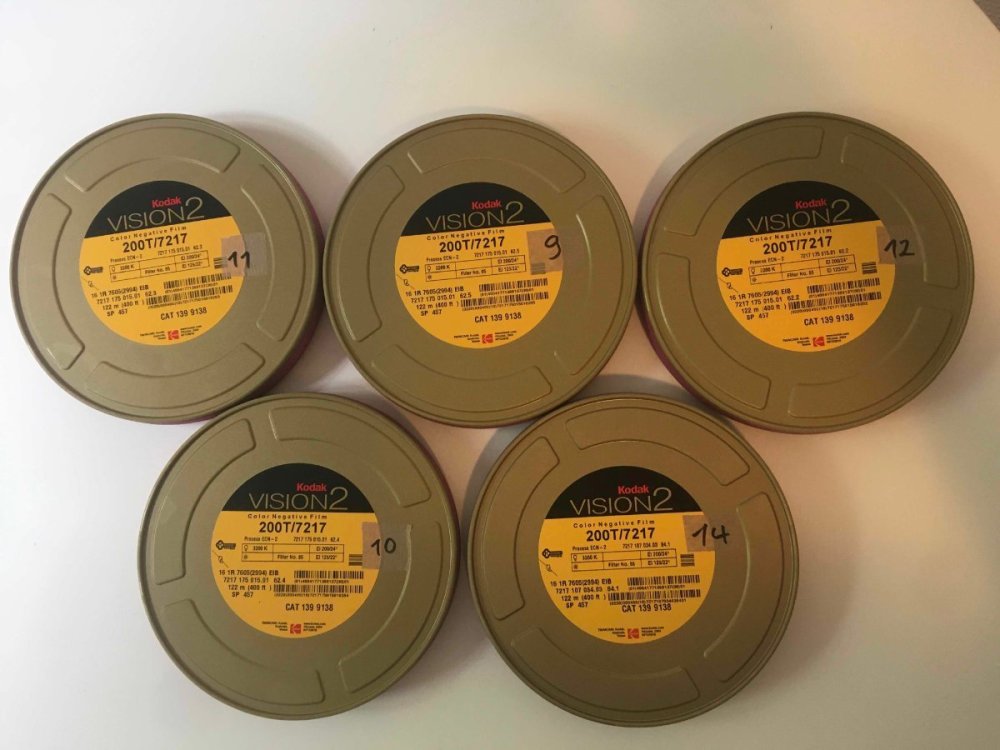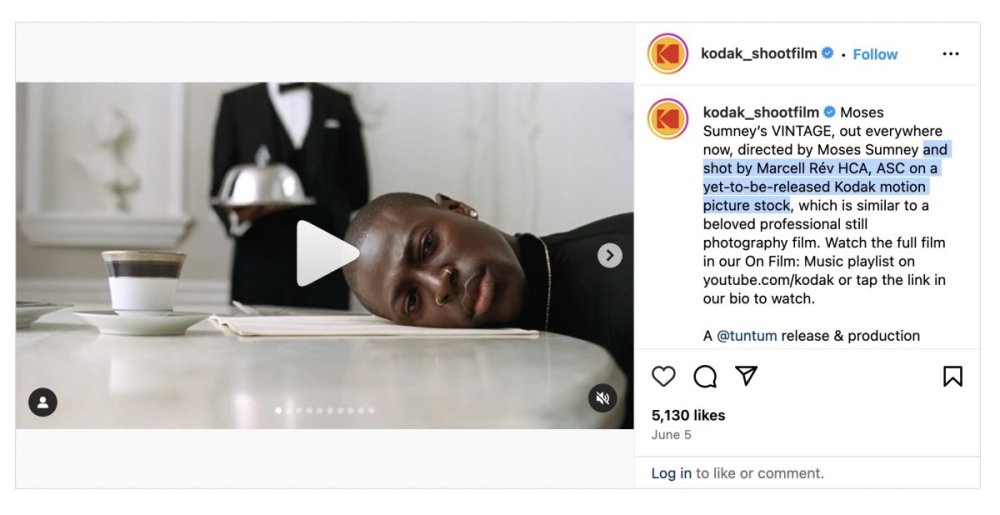
Gautam Valluri
Basic Member-
Posts
221 -
Joined
-
Last visited
Everything posted by Gautam Valluri
-
Certainly! I'll ask my colleagues who worked on this system for details. Our lab's mission is free and open sharing of knowledge.
- 13 replies
-
- color grade
-
(and 1 more)
Tagged with:
-
I think David explained your question very well above. The way I can explain it is that anything that concerns light is additive (lamps, digital projection etc) and anything that concerns dyes (paints, film prints etc) are subtractive. I feel whats confusing you further is when working with positive prints, you have to reverse the colour filters. For example, if you want to remove cyan from your camera negative, you'd place an orange filter on your lens but in a contact printer, to remove cyan you'd have to add a cyan filter to your image. It's because a positive film inverses the colours of a negative film.
- 13 replies
-
- color grade
-
(and 1 more)
Tagged with:
-
That's me and yes we used a Debrie Matipo printer and used to physically make cardboard bands and punch holes of different sizes to control the contact printer light, and even stick Kodak colour filters on it to colour-correct. We have since developed a system where we use an LED lamp in the contact printer that we can dial in different colour values to colour correct without physical filters.
- 13 replies
-
- color grade
-
(and 1 more)
Tagged with:
-
Hello all, I have 5 x 122m (400ft) rolls of 7217 Kodak Vision2 200T that I'd like to sell. The stock has been frozen since I bought it back in January 2023. Here is a test I've done of this stock on an Eclair ACL + Push process +1 development + Cintel scan: Asking price is 160€ per roll or 750 € for the whole lot + shipping costs (to be determined based on your country, preferably in europe). Payment via PayPal. An invoice can be arranged as well. Here is a photo of the stock:
- 1 reply
-
- 1
-

-
Isn't it possible to dupe Ektachrome to Ektachrome by contact printing?
-
I would like to take this opportunity to plug in the Film Projection website that was created to help keep projection of film prints alive: https://www.filmprojection21.org/?lang=en_us
-
I've recently used an Abracam Clipone mattebox on a Zeiss 11-110mm/T2.2 + Arri SR2, it fit very well.
- 3 replies
-
- matte box
- vintage lens
-
(and 1 more)
Tagged with:
-
New Mystery filmstock from Kodak?
Gautam Valluri replied to Gautam Valluri's topic in General Discussion
Tyler, did the Orwo colour stock you tested have an anti-halation layer? I would love this mystery stock to be an ECN-2 version of Portra 400 or even Ektar. Also down for the mixed daylight-tungsten balance aspect. A filmstock specifically made for LED lighting and DI is exciting. Also, I feel Moses's video has that Portra "sheen" to it. -
Hello all, I just came across this from the Kodak instagram page, a new Moses Sumney music video shot on "a yet to be released film stock" by Kodak : Nkosi Roma on Youtube speculates that it could either be a ECN-2 version of Portra or a new Vision3 400D stock. Anybody know anything about this? Here's the music video for those interested, some good images:
-
If he's filming on an SR3, I think he can switch between S16 and N16 ?
-
A few months ago @Kamran Pakseresht was working on possibly 3D printing new A-Minima spools: It would be really interesting if this works, would delight many A-minima users.
-
Beautiful images! I see sprinkles of Jonas Mekas and Koyaanisqatsi in there. I'd love to see the full film on the big screen someday.
-
Not anymore but some labs will wind down 400ft rolls down to 200ft on special request, provided they have sufficent minima rolls.
-
You're correct, it was a small crew. The script assistant was also helping me with the tripod and camera prep so that helped a lot.
-
Aapo, you were spot on about the ants! And also everything else, glad I had your advice to prepare myself. Thanks again!
-
Oh and also Dirk Dejonghe had posted on these forums about his work on Aki Kaurismaki's films. I believe he did The Other Side of Hope photochemically first and then colour graded the DCP to match the print's colours. I believe for Fallen Leaves he colour-graded the film digitally first but keeping strictly to only the parameters that are possible in photochemical timing (no power windows for example). Both films have exquisite colours, I highly recommend you do a search for these posts.
-
The first thing you have to understand is that photochemical timing works in the subtractive colour space (CMYK) and digital colour grading takes place in additive colour space (RGB et al). In a contact printer, you are basically playing with how much light you're letting through your image negative and onto the positive at a first level and various colour filtrations in a second level. When I made my first contact prints on the Matipo, we used to make an exposure/ filter band (which is basically a 35mm shaped carboard strip) by punching holes of various diameters (for controlling exposure) and then manually pasting colour filters on to the holes. It was also kind of freakishly counter-intuitive as the print film sees the colours as "opposites". So to take out Cyan from your image, you need to paste a cyan filter on your filter band. You make the filter band in order of various sequences in your image negative and then you make a tiny "notch" on the perf-side of your neg (crazy I know) to trigger the next filter in the band to enter the contact printer. But of course these Matipos were 1950s tech and labs now have much more advanced ways to do the colour timing. There's some material and manuals on various kinds of contact printers on the filmlabs website: https://www.filmlabs.org/technical-section/film-printing/ Ultimately, you have to prepare yourself to doing at least 3-4 passes in colour timing to get everything right. To save time and costs, we at L'Abominable do a "bande courte" where we take about 120 frames of each sequence from our final negative (or frames that closely resemble the shots) and put together into a smaller cut negative and colour time it. For my 10-minutes films, I usually ended up with a "bande courte" roll of about 2 minutes that I would contact print several times with various changes to get to the final filter combination, which I will then use on my final edited negative. I'm sure MONO NO AWARE have their own method of going about this. One must adapt to their lab in this case. Good luck, enjoy the process and share your results with us!
-
Yes, I just bought a pair of waterproof trekking shoes specially for this shoot.



